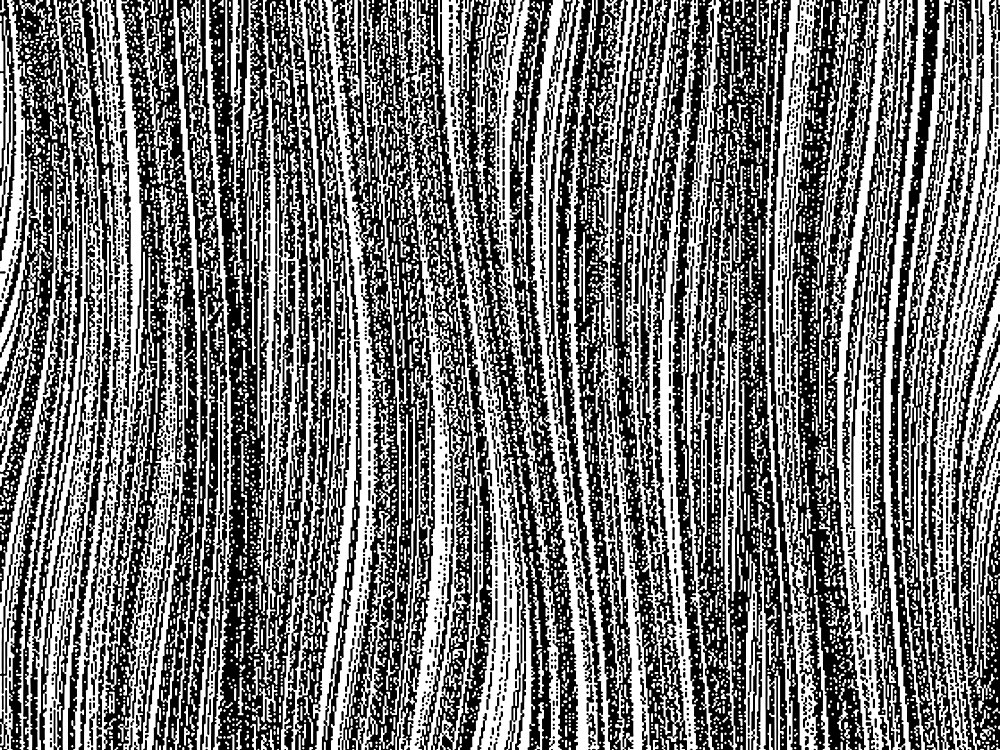A Mathematician Whose Only Constant Is Change

Tim Klein for Quanta Magazine
Introduction
Amie Wilkinson is an explorer. Instead of seeking uncharted land, she’s after undiscovered mathematical worlds — complex systems of motion that unfold in unexpected ways. As a professor at the University of Chicago, she’s known for discovering unique types of these “dynamical systems” that had been only conjectured to exist.
Wilkinson’s career has proceeded in a dynamical way, too. She now approaches her roles as a researcher, teacher and mentor very differently than she did when she was starting out. During her undergraduate years at Harvard University in the 1980s, there were no female professors in the math department, causing her to doubt whether she would ever belong in the ranks of top-flight mathematicians. Then when she was a young researcher, “I could be kind of hard on my students,” she said. “That was an extension of my own insecurities about my own abilities.” But, she says, “I think that I am much more visionary now with my students because I have much more confidence.”
Quanta Magazine spoke with Wilkinson about the emotional dimensions of mathematical discovery, bizarre examples of dynamical systems that she’s found, and the idea of a “safe space” in mathematics. Multiple interviews have been condensed and edited for clarity.
What are dynamical systems?
Dynamics is the study of motion. In particular, the motion of points in a space dictated by a fixed set of rules. For example, the evolution of the solar system, in its idealized form, unfolds exactly according to the rules of gravity. And so where our solar system is a minute from now is completely determined by where it is now.
What attracted you to this area of mathematics?
You can imagine a photograph of the current solar system. That’s a static thing. But when you add dynamics, that static picture comes to life. There are certain complicated fractal objects — like a Julia set, or the Koch snowflake — that are produced by dynamical systems. The actual geometric features of the objects carry the marks of the dynamics that produced them. I find that really beautiful. It’s like things have a history and a future, they’re not just these objects I’m studying.
![Infographic titled "How to Make a Julia Set". Text underneath: In math, a dynamical system feeds the output of an equation back in as an input. For example, consider the Julia set, defined by the simple equation f(x) = x2 – 1. Start with a complex number of the form a + bi, where i is the square root of –1. Plug this number into the equation. Then take the answer, plug it into the equation again, and repeat the process over and over. Much depends on what complex number you start with. Often the answers will get bigger and bigger, zooming off to infinity. But sometimes the numbers will remain small. If you graph the dividing line between the numbers that go off until infinity and numbers that stay bounded, you get the Julia set, a fractal object that has an intricate structure no matter how closely you zoom in on it. [LEGEND TEXT] The Julia set of f(x) = x2 – 1 in the complex plane.](https://www.quantamagazine.org/wp-content/uploads/2019/06/JuliaSet_WilkinsonEdit.jpg)
![Infographic titled "How to Make a Julia Set". Text underneath: In math, a dynamical system feeds the output of an equation back in as an input. For example, consider the Julia set, defined by the simple equation f(x) = x2 – 1. Start with a complex number of the form a + bi, where i is the square root of –1. Plug this number into the equation. Then take the answer, plug it into the equation again, and repeat the process over and over. Much depends on what complex number you start with. Often the answers will get bigger and bigger, zooming off to infinity. But sometimes the numbers will remain small. If you graph the dividing line between the numbers that go off until infinity and numbers that stay bounded, you get the Julia set, a fractal object that has an intricate structure no matter how closely you zoom in on it. [LEGEND TEXT] The Julia set of f(x) = x2 – 1 in the complex plane.](https://www.quantamagazine.org/wp-content/uploads/2019/06/JuliaSet_WilkinsonEdit_Mobile.jpg)
Quanta Magazine
What kinds of questions do mathematicians try to answer about dynamical systems?
You might ask: For this particular trajectory we’re on now, is it unstable? Or for how long might it be stable? How much time will it take before Mercury is ejected, for example? As it turns out, in this whole universe of solar systems there are some really weird long-term evolutions that can happen.
Even within the motion of our own solar system?
No. It’s when you consider the motion of all possible solar systems that feature a sun and planets with the same masses as our planets. The future of our solar system is just the trajectory of a single point through this massive dynamical system.
How’d you choose this field?
It could have been a coincidence. But I do think that dynamics appealed to me because of its dynamic nature. The idea of studying the notion of action, it just completely brought life into the subject for me. It literally animated the subject.
What have been the biggest or most provocative questions for you since then?
For me there are some interesting big questions like: What are the general mechanisms we can find for certain types of long-term behaviors in a dynamical system? How can we understand the rough features of a dynamical system with partial information? Those are the kinds of big organizing questions around things that I do.


A graph of a “pathological foliation,” an example of a dynamical system that Wilkinson discovered (top). Wilkinson designed a textile, now on a pillow in her office, of this foliation.
A graph of a “pathological foliation,” an example of a dynamical system that Wilkinson discovered (left). Wilkinson designed a textile, now on a pillow in her office, of this foliation (right).
Courtesy of Amie Wilkinson; Tim Klein for Quanta Magazine
How do you go about answering those questions?
The way I approach the subject, which is not an unusual way, is as an explorer. I’m looking for new phenomena that can occur. So some of my most interesting work has been to construct examples of surprising dynamical systems.
What do you think are the personality traits that contribute to being a good mathematician?
Flexibility. A willingness to change course when you see that things should go a different way. The ability to backtrack, and go forward and follow different paths and then come back to where you were. Also, almost every mathematician I know has a certain obsessive quality to their nature. I think you need to be the type of person who goes down a rabbit hole and has this almost constitutional inability to quit.
Is this what you thought being a research mathematician was like, before you became one?
I knew very little about what a research mathematician was when I first became interested in the idea of being one. I think I didn’t understand how open-ended it was, and how much freedom there was, and how much pleasure there was in the freedom — that you could really, truly pursue any arguments.
How do you feel in the face of such freedom? It can be exhilarating, but it can also be frightening.
When I was younger, it was daunting, and I guess daunting is a little bit like frightening. You wouldn’t know where to start. And if you don’t have the confidence that what you’re going to do is going to lead to something, it’s easy to feel lost. Now I just find it completely exhilarating.

Wilkinson on the University of Chicago campus.
Tim Klein for Quanta Magazine
Can you recognize a point in your career where it kind of switched from daunting to exhilarating?
Well, I think every paper I’ve written has been a milestone. And the earlier the paper, the more of a milestone it was. The first research paper I wrote — in the summer after my sophomore year at college — finding my way to a solution was an incredible high. And then, in every single paper looking back, I can remember that exact precise moment when I had the key insight — I remember exactly where I was, what I was doing.
When did you decide to become a mathematician?
When I was in high school. But then I went to college and I lost a lot of confidence. And I lost a lot of certainty, which is probably a good thing — one should not be so certain of anything at that age.
What led to the loss of confidence?
First of all, mathematics had always been very easy for me. And suddenly it wasn’t easy at all. And there were things that I had trouble learning. And I looked around and I saw other students who seemed to have no trouble learning. I was at Harvard. So I was surrounded by the best undergrads in the country. I thought that there was a type of person who goes on to be a research mathematician and I was certainly not very much like them.
In a lot of professions it’s easy to doubt you belong at first.
There were no women researchers at Harvard in math. I think I did suffer from a lack of role models.
As a woman in math, do you think it’s harder to develop the confidence that you can be successful?
I really don’t want to speak for other women. Because that’s a very personal thing. But I would say that personally, it’s definitely harder to fake it — for me at least — when you’re not part of the majority. It makes it very hard to feel like you’re doing what you should be doing.
Has your approach to mentoring changed over the course of your career?
When I was younger, my own insecurity would color how I advised students. I don’t think I was sufficiently encouraging, and I think I could be kind of hard on my students. And really, that was an extension of my own insecurities about my own abilities. I was afraid to advise a student working on a big problem. And I think that I am much more visionary now with my students because I have much more confidence.
Do you think you’re better at doing mathematics now than you were 20 years ago?
Yes, definitely. Because I know so much more. Proving things is a matter of finding good arguments, and when you’ve seen a lot of good arguments you have a much better sense of what a good argument smells like. So I mean, I’m a better mathematician, but I don’t know if my best work is behind me, although I think no mathematician knows.
The president of your university, Robert Zimmer, is a mathematician who has been outspoken about the importance of free speech on campus. How do you feel the field of mathematics has done with some of the current campus issues related to speech and diversity?
One thing I think is important, and one thing I tell my undergraduates at the beginning of the class — and this is kind of a little, you know, middle finger to the guy who sent out the letter a few years back saying to the incoming freshmen there are no safe spaces at the University of Chicago — I say this classroom is a safe space. And what I mean by that is you should feel safe from feeling stupid. There is no such thing as a stupid question. And I want to encourage you to ask the question. To me, the fear of being seen as saying something trivial is the biggest impediment to free speech in a math classroom.
You said in another interview that being a mathematician keeps you young. What did you mean by that?
If you’re an active mathematician, you don’t grow old because you’re constantly interacting with fresh young people with new ideas. The field is so lively and moves at such a fast pace compared to something like the lab sciences.
What are some questions about dynamical systems you’ve studied?
If you take a typical point, and you watch it evolve over time according to a set of rules, you can ask whether it kind of visits all parts of the space. That property is called ergodicity. You can ask other questions: If I take some part of the space — a blob in the space — and just watch that part of the space evolve, will that blob get evenly distributed throughout the space and kind of fill it up? That’s called mixing. I’m really interested in finding mechanisms that produce mixing.
Could you give me an example of a new phenomenon you’ve found in your career?
What I looked at is in some ways similar to a Julia set. It’s something called a foliation. In its simplest form it’s just a family of curves in a square. Foliations are produced all the time by dynamical systems.

Wilkinson marks up a physics paper that explores a quantum dynamical system.
Tim Klein for Quanta Magazine
You stripe the entirety of the square with these wavy curves? It looks like hair.
The features of these foliations are really key to understanding things like mixing. I can take every strand of hair — there are infinitely many of them — and for each curve I pick at most one point. That one point has length 0. It’s very, very small. Mike Shub and I found that for a certain class of foliations, if I pick at most one point in each hair, and then I look at the total set I produce, it has area 1.
You’re saying that if you pick just one point on each of those strands, the set you produce has the same area as the whole square?
That’s correct. It’s very strange. If instead of strands of hair you just used vertical line segments, the set you’d get would have area 0. But these center foliations produced very nice-looking dynamical systems — they look pretty tame — that are pathological.
That’s a strong word. Why are they called “pathological”?
Your first reaction is: Oh, God, you don’t want it to happen. A lot of people expected that that couldn’t happen. And it looked like everything is so much harder than we thought it was, because this pathological behavior can occur. But after that we realized this is an actual, inescapable feature that is quite beautiful in itself.
Do you find that dynamical systems provide a language that you use to think about other non-math areas of your life?
Yeah, definitely. You become much more aware of how fragile equilibrium is. Things can look stable for a long time and then suddenly fly off into some other territory. You understand how precarious being close to equilibrium is, for the most part, because most equilibriums are not stable. Things can be almost imperceptibly changing, and eventually those changes start to add up, then things change really quickly. Because that’s the nature of change in typical dynamical systems. Things can seem stable for a very long time, and then they go exponentially wrong. I do think about a lot of things — things involving human nature, historical trends, and very serious things like climate. It informs my way of thinking about life. There’s essentially no such thing as being in equilibrium.






